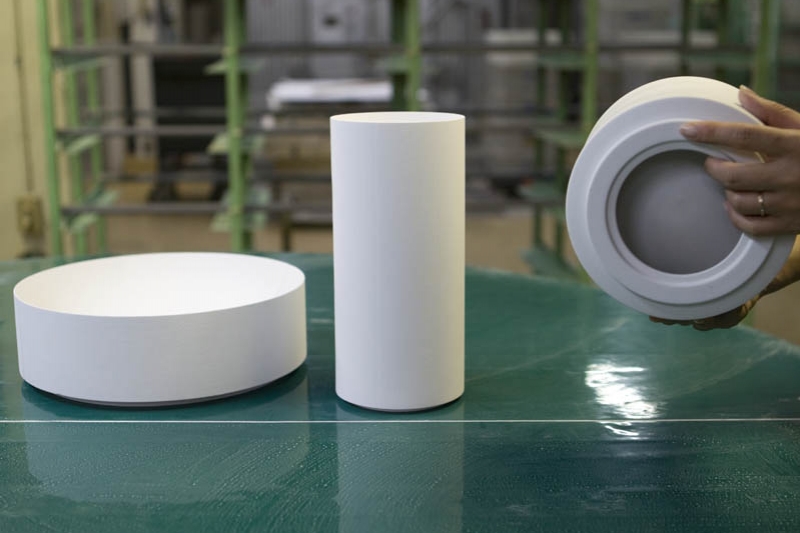Interview: Kueng Caputo
Swiss designers Sarah Kueng and Lovis Caputo have worked together since studying design at the HGKZ School of Art and Design in Zurich. Kueng Caputo produce thoughtful, responsive, designs. There is an emphasis also, says Kueng Caputo, on understatement and improvisation in their work. Here they explain the thinking behind their work for 2016/; an engaging porcelain design with an optical twist.
- What did you find especially interesting about Aritaware?
The tradition of making porcelain in Arita is such that the processes; making clay from porcelain stone, molding, firing, glazing and trading, are divided up and individual companies specialise in each separate aspect. Those divisions of labor are similar to the ones you might find in the car industry, although in Arita much of the manufacturing process involves hand production.
- What were your main ambitions for this collection?
We worked with Mr. Yamaguchi of the Kinemon Toen pottery. He has a
strong commitment to colour, as do we, and so we chose to produce a collection that maximised the Kinemon Toen pottery’s ability at realising colours.
- You called your collection ‘As If ’. What does the name reference?
‘As If’ is a reflection on the visual illusion that was an aspect of our design: Kinemon Toen specialise in a sprayed glaze, we used this to create a shadow-like gradient across the surface of the porcelain tableware and accessories. The technique creates an illusion similar to when light hits an object and casts a shadow. It is a play with the depth of the object, a play of shadows and light. Glaze normally contains components of glass and is reflective but we developed a matte color glaze without these in order to achieve the final effect, we didn't want any light reflecting on the surface. It was difficult to produce as the glass components in a glaze usually add strength. But Kinemon Toen didn't give up and made a glaze that was entirely matte but also strong enough for use.
- What does Kinemon Toen pottery specialise in?
The Airbrush techniques of Mr. Yamaguchi! They are Godlike! Only Kinemon Toen could have made our design. Although we are not able to speak Japanese and Mr Yamaguchi does not speak English we succeeded in creating together this unusual technique. We also had great support from Yoriko, David and the 2016/ team who translated not only language, but also interpreted the design thinking approach and the traditional craft point of view between us both.
- Did you come across any obstacles in the design process?
The development of porcelain takes time. Prototypes need to go through the same process as a final object; they must be built, dried, fired, glazed and fired again. It can easily take one week. Also, we are based in Switzerland and so we could not visit the pottery often. Porcelain material sometimes needs improvisation on the spot and there were occasions where we missed being there.
- Can you sum up your experience of working with porcelain for the first time?
Every material has its own particular characteristics. It has been great to learn, in detail, about one material’s traditional way of production. It has been an irreplaceable experience. Everything we experienced in Arita helped us come to our final design.










